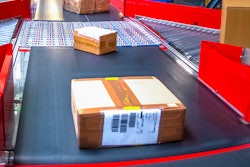*This content is sponsored by Propane Education & Research Council (PERC)*
For the past decade, new and used forklift prices have been on the rise, in line with higher steel and aluminum prices and tariffs, higher freight costs, higher warranty costs and, of course, higher demand. Today a company could be looking at an investment of $20,000 - $60,000 on a new single standard-capacity forklift in 2023.
According to Hyster-Yale’s latest quarterly earnings report released last week, “forklift market data indicates that new unit, first-quarter 2023 booking activity decreased … compared with strong prior-year levels but was still ahead of pre-pandemic.”
New and used forklift prices are on the rise meaning owners and operators need to be conscious of where they can find ways to maximize the life of their equipment. That's why so many are turning to propane-powered equipment, where savings can be found on fuel and maintenance, where environmental friendliness can mean new business and where schedules can be optimized with limited downtime for refueling or safety.
While some forklift market activity has begun to decrease, Jim Bunsey, Director of Commercial Business Development for the Propane Education & Research Council (PERC), says all forklift prices are up 45% in the last three years and propane forklift sales are still increasing “but it's still the diesel displacement.”
“We can show savings in fuel costs with propane. We have emission reduction and affordability tied together, that's what makes a ‘new old’ fuel like propane attractive,” he says.
And there are other reasons warehouse operators choose propane-powered forklifts.
Lower upfront cost.
In that large range of forklift prices mentioned above, propane forklifts don’t demand a higher premium over gasoline models, where diesel can cost more and have more components or more heavy-duty components and electric can command the highest prices. “When we start to look at electric, that's where we're seeing about 25% to 30% cost increase to get the batteries and chargers.”
Safe for indoor usage.
While Bunsey says the growth in 2023 has been in replacing diesel forklifts for outdoor usage, within the warehouse, diesel is a no-go because of the air quality issues it causes. Instead, the options become electric forklifts or propane, which has near-zero emissions, and can be used both indoors and outdoors reducing need for different machines for different uses.
Minimal downtime.
Twenty-four-hour facilities don’t have the downtime to charge forklifts for 6-8 hours between shifts. “Battery technology is getting better, but it still takes some time, where we can go and we can refuel our propane forklifts in under 10 minutes, or swap a bottle out in five to eight minutes where they can disconnect and refuel and be ready for the next shift.”
Variety of manufacturer options.
In addition to Hyster-Yale, there are 6 other American-made propane forklifts and several other brands manufactured overseas. Big-name equipment companies like Mitsubishi, Caterpillar, Toyota and Clark can be trusted to provide the same quality and durability on this alternative-fueled machine.
Useable in extreme weather.
Batteries on electric forklifts lose capacity in extreme hot or cold temperatures, limiting their run-time. PERC’s Bunsey visits propane users across the U.S. year-round and has made some hair-raising trips, including Alaska at -20 degrees and Texas at 105. “I don't think anybody wants to go outside in that! To the forklifts, it really doesn't matter. Propane gives you the same performance, the same runtimes. So now you can schedule shifts without pushing back shipping deadlines.”
Scalable to customer demand.
Standard-capacity propane-powered forklifts can be adjusted to the demands of the warehouse. Depending on mileage and engine run-time, operators can adjust to smaller or larger tanks, so their machines are flexible to their needs and they aren’t increasing carrying costs during slowdowns.
Environmentally friendly.
Everybody's tasked with decarbonization right now and the propane forklift offers a path to that success. “I think that's why we're seeing an increase in propane forklift sales with the renewable propane that's available,” Bunsey says. That meets the demands of states like California with stringent standards and still offers the reliability that’s missing in electric models.
What Impacts a Forklift's Price?
Source: ToyotaForklift.com
1. Capacity. Higher capacity equals higher price.
2. Manufacturer. Better quality or bigger name may increase price.
3. Expected Equipment Life. Durability and reliability may cost more upfront but save you in the long run.
4. Operating Cost. Fuel prices and emissions credits can mean adjustments in price.
5. Warranty Costs. Warranty prices are on the rise but may be useful depending on how much – and how hard – you plan to run your equipment.

















